The inventors and their inventions
From a bicycle that can filter water to collecting excess condensed water from the greenhouse to filtering rainwater, our participants’ creativity and passion for #STEM completely blew us away. We received an impressive 15 inventions that were judged across multiple categories, such as Rising Star Grand Hackathon, Inventive Spirit, Sustainable Invention, Engaging Voice, and Community Impact. We realised these awards were not enough, so we introduced 4 more categories: Relevant Invention, Courageous Award, Enthusiastic Participation, and Dedicated Inventor.
Watch all of our amazing inventors and their inventions below!
Our winning inventions
The winners of the Solvay Global Hackathon went above and beyond to create inventions that are not only people-friendly but also environment-friendly. Our winners are innovators, inventors, and design thinkers. They were able to design a solution to help benefit a community of their choice by keeping the needs of the community in their minds. Let us present to you all the winners.
Rising Star Grand Hackathon Winner
The grand winner of the Solvay Global Hackathon is Vedika Ramakrishnan from India. She was inspired by the hemodialysis machine and created a prototype which will help desalinate ocean water for drinking purposes called Oceanagen. It helps in solving the water problems of the world through the right use of saline water. We are impressed by the amount of hard work and passion she put into this project.
The Most Inventive Spirit
The winner of the Most Inventive Spirit Award goes to Nivedita Raj! Her invention, CFC2, is a water filter which was created keeping in mind the water accessibility issue in Papua New Guinea, where 63.4% of people lack basic water necessities. Young girls are the ones responsible for collecting water, and school teachers even send girls home early by noon so they can fetch water. Having a source of water on standby would aid in enriching young girls’ education and the general well-being of the community.
The Most Engaging Voice
The winners of the Most Engaging Voice Award go to Yoon Lee and Erin Burm. Their invention, The Watercycle, combines two existing things—bicycles and reverse osmosis water filters—to create a bicycle that filters dirty water as an individual uses it. Inspired by the situation of the people in Bialla, Papua New Guinea, of West New Britain, specifically girls and mothers, this invention is a sustainable creation because not only can the bicycles be used for up to several years, the reverse osmosis water filters attached to them are recyclable.
The Most Community Impact
The winner of the Most Community Impact Award is Anika Garg! Her stormwater filtration system collects stormwater from roads and separates it from sewage water. It then holds the water and cleans it by filtration through the soil, solar disinfection distillation, and chlorination all at once. Inspired by the underdeveloped countries that face water shortages and are situated at latitudes that receive a lot of rainfall and direct sun rays, this invention will enable them to prevent wastage of water and harvest and use rainwater even in urban areas.
The Most Sustainable Inventions
The winners of the Most Sustainable Inventions are Aashna Anand and Julia Welner. It’s a tie! They both created inventions while considering their surroundings, recyclability, and the circular economy!
Aashna’s invention, the Modern Water Ecosystem, is designed to benefit families in Nagaur, Rajasthan. They live in slum dwellings, relying on farmers for food and the city village for water. The water is drawn from Sambhar Lake and filtered using sand. Nitrates and phosphates from fertiliser runoff are carried into lakes, ponds, and other bodies of water. Eutrophication eventually takes place. This technique employs bioindicators (fish species) that are released into the ocean with a tracker and can disclose information about which chemicals or contaminants are present in the lake. Following analysis of the data, water is poured through a massive filter that has four layers of filtering, including an algae filter, a nitrate filter, a phosphate filter, and a plastic filter, all of which are based on the data.
Julia’s invention, The Fog Catcher, condenses the fog in the air, takes it in via nets, and when it heats up, the water will fall and be collected. Inspired by the needs in Namibia, this invention also takes inspiration from the Shishi Odoshi, a Japanese device made to frighten away animals that pose a threat to agriculture.
Special Recognitions
Corrine Yang won the Most Dedicated Award for her water filtration system. It addresses sustainable power sources, introducing into the community various new sorts of portable and accessible technology. Even with the time disparities, she participated in the hackathon with remarkable enthusiasm.
Marina Cioponea bagged the Most Relevant Invention Award for her unique invention, Heal and Peel. This is a wound care plaster that uses water to sanitise wounds, especially made keeping in mind people who are affected by wars.
Rhythm Rajyaguru won the Most Enthusiastic Participation award for her water filtration system. We loved Rhythm’s thought-provoking questions and insights that she shared during the hackathon. Her invention showed immense creativity and an innovative approach to solar energy.
Emma won the Most Courageous Award for her invention, which collects condensed water from the walls of greenhouses. Her invention dives into deep research, pulling examples from the US, Belgium, and Spain and really exploring topics that are essential to grow this idea. Determined to help the farmers of El Poniente, Emma showed huge commitment by bringing in not only scientific data but also her own experimentation to fully create this invention.












